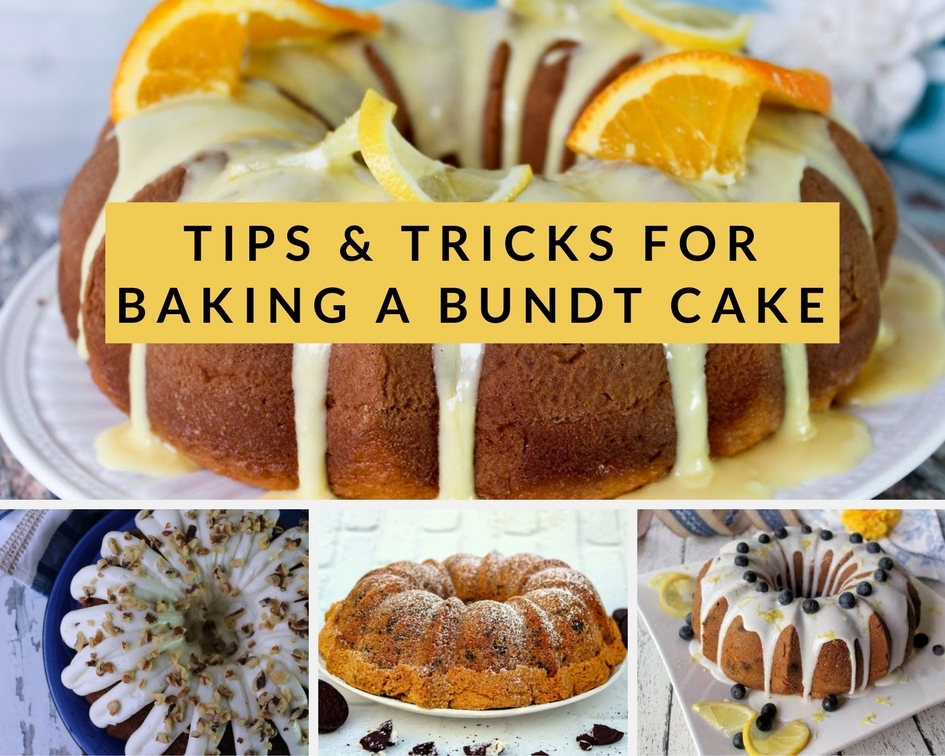A Bundt cake can be any type of cake. What makes it a Bundt cake is the pan that’s used – the Bundt pan. H. David Dalquist, the owner of Nordic Ware invented the pan in 1950. Its round shape was inspired by a European cake called Gugelhupf that were baked in a distinctive mold.
Bundt pans are round with ornate designs in the pan. Each Bundt has a tube in the center that leaves a hole in the cake. The hole allows for more batter to touch the surface of the pan and evenly distributes heat throughout the pan. Typically, Bundt cakes are decorated simply with a drizzle or dusting of powdered sugar to show the beauty of the cake.
Dalquist trademarked the name Bundt pan and all Nordic Ware pans are made of aluminum. Pans are sold made of different materials, but they are marketed as fluted tube pans due to the trademark.
Bundt pans had a small devoted group of cooks who baked with them, but they were not extremely popular. In fact, Dalquist almost ceased production of the pans. But, in 1966, Ella Helfrich created a Tunnel of Fudge cake for the Pillsbury Bake-Off that was prepared in a Bundt pan. Ella won second place and helped to raise the popularity of Bundt cakes. From that point on, a Bundt pan was found in most baker’s kitchens.
Bundt pans produce beautiful cakes. The pans themselves can be extremely ornate or minimalistic, which can make baking a cake a tad fussy. Here are a few tips for baking a fantastic Bundt cake.
Tips for Baking a Bundt Cake
- Use the Correct Pan Size: The right pan size is one of the keys to baking a beautiful bundt cake. There are many sizes of pans, but a traditional Bundt pan holds 12 cups of batter. The shape of the pan will also determine how much batter a pan holds. Most recipes require a 10-12 cup pan. If you’re not sure how large your pan is, use a measuring cup to fill with cups of water until it’s 2/3 filled. That will show the capacity for the batter.
- Use the Right Type Pan: Light metal non-stick pans are best for a Bundt cake. Dark pans will unevenly bake the cake. The non-stick surface will help the cake release.
- Prep the Pan: Don’t prep the pan and you’ll have an extremely difficult time getting the cake out of the pan. Pans must be coated in oil (like butter or shortening). A pastry brush makes getting the oil into the crevices easy. After oiled, flour needs to be dusted to ensure the cake releases from the pan. If making a chocolate cake, dust the pan with cocoa powder. Granulated sugar can also be used which, once baked, will form a nice crust on the outside of the cake. Baker’s spray (that contains oil and flour) is very convenient too. Make sure to tap out any extra flour (or cocoa and sugar) before pouring the batter into the pan.
- Filling the Pan: Bundt pans should be filled about 2/3 the way full. Overfilling will result in the cake seeping out of the pan. Underfill and the cake will be too thin. Slowly pour the batter into the pan. Pouring too fast will result in air pockets in the cake. To prevent air bubbles, tap the pan on the counter before placing in the oven. It helps the batter get into the decorative corners of the pan. If there is extra batter, turn it into cupcakes or mini cakes.
- Don’t Let the Cake Cool Too Long: Cooling the cake properly is almost as essential as buttering the pan. Roughly 10-20 minutes is an appropriate time for cooling a Bundt cake in the pan. Then, flip the cake onto a cooling rack. If the pan has been prepped properly, the cake will slowly release. Cool the cake too long and the cake may become damp and stick to the pan.
Bundt Cake Recipes
Just a Pinch members LOVE their Bundt cakes. If you’re inspired to bake a cake, try one of these fantastic Blue Ribbon Bundt cake recipes.
Click Here for Chocolate Coconut Bundt Cake Recipe
Click Here for Citrus Pound Cake With Orange Glaze Recipe
Click Here for Oreo Cookie Pound Cake Recipe
Click Here for Peggy’s Homemade Carrot Cake with Cream Cheese Icing Recipe
Click Here for Beautiful Lemon Bundt Cake Recipe
